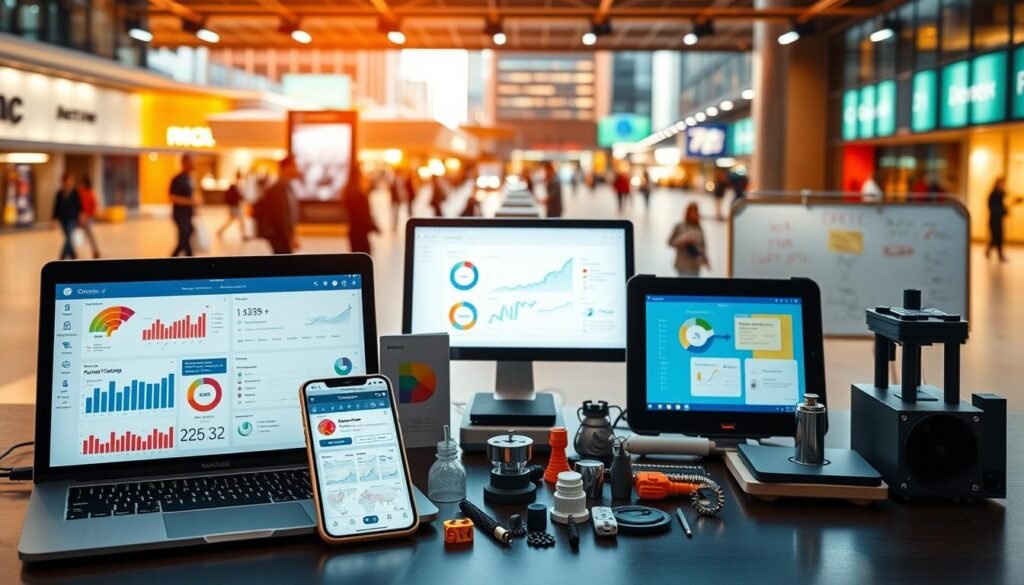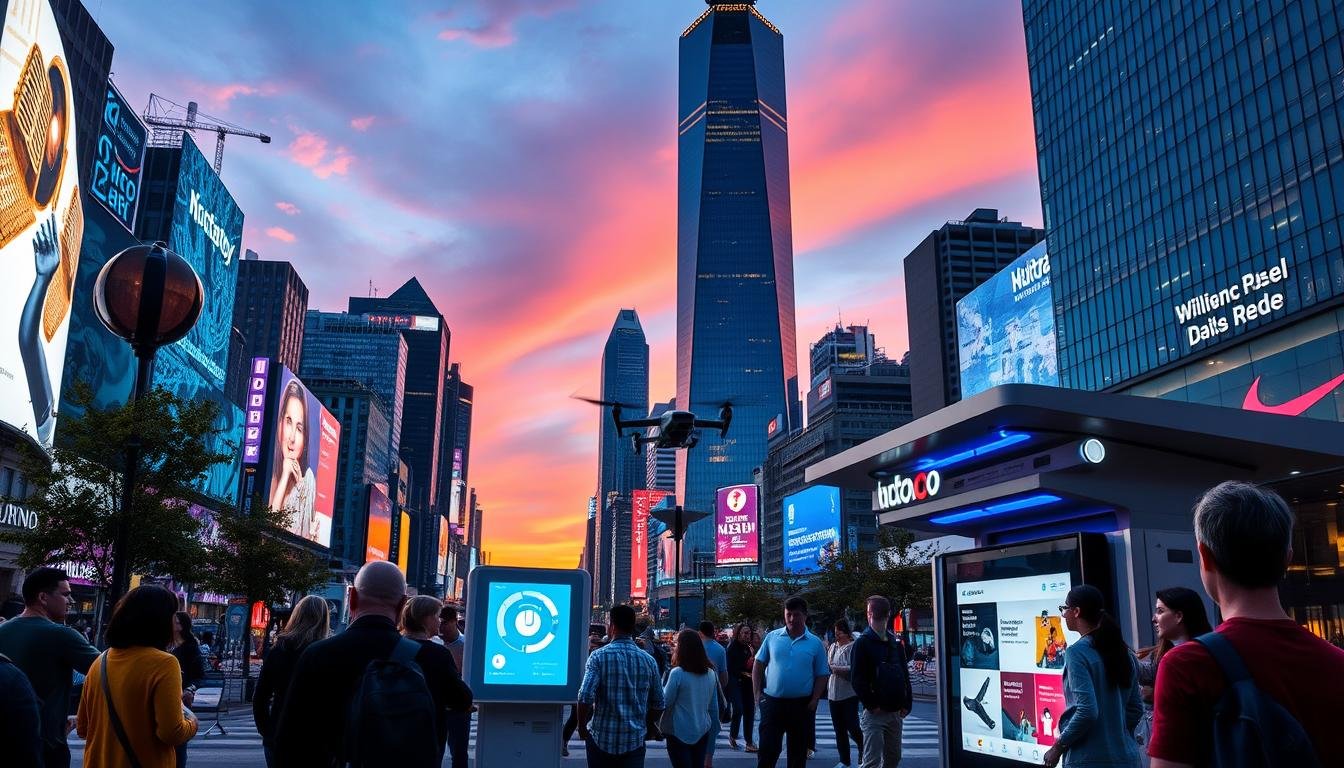Table of Contents
Have you ever wondered how tools like AI and blockchain are reshaping the way we solve global challenges? The role of modern advancements is more than just convenience—it’s about creating meaningful impact on communities worldwide.
From improving communication to fostering equitable opportunities, these tools are driving growth and development. Columbia University emphasizes “mission-driven entrepreneurship,” aligning progress with fairness and accessibility.
However, it’s not without challenges. While tech bridges gaps, it also faces issues like misinformation. The global market for these solutions is projected to reach $4.1 trillion by 2030, showcasing its immense potential.
Key Takeaways
- Modern tools like AI and blockchain are transforming global problem-solving.
- Columbia University highlights mission-driven entrepreneurship for equitable growth.
- Tech bridges gaps but also faces challenges like misinformation.
- The global market for social solutions is projected to hit $4.1 trillion by 2030.
- These advancements create opportunities while addressing systemic issues.
How Technology is Driving Social Change
What if the tools we use daily could solve some of the world’s biggest problems? From global awareness campaigns to efficient resource allocation, modern advancements are reshaping how we address societal challenges. These tools are not just about convenience—they’re about creating lasting impact.

Access to Information and Awareness
Platforms like Facebook and LinkedIn have become powerful tools for spreading awareness. They democratize knowledge sharing, enabling grassroots movements to reach global audiences. For example, Gmail has played a key role in organizing community-driven initiatives.
Collaboration and Networking Across Borders
Crowdsourcing and virtual tools are breaking down geographical barriers. Organizations like Paltic use basic machines and human networks to upcycle plastic waste. This collaborative approach fosters innovation and tackles global issues effectively.
Data Analytics for Informed Decision-Making
AI-driven analytics are transforming how nonprofits operate. Harvard, for instance, uses AI to evaluate climate market opportunities. Mobile apps are also delivering healthcare and education to remote areas, ensuring equitable access to essential resources.
Virtual classrooms have seen a 20% rise in user engagement, showcasing the potential of EdTech. These advancements highlight how solutions can address systemic challenges while empowering communities worldwide.
Challenges in Leveraging Technology for Social Innovation
Why do some communities still struggle to benefit from modern advancements? While tools like AI and blockchain hold immense potential, systemic challenges often hinder their effectiveness. These barriers range from unequal access to ethical dilemmas in deployment.

The Digital Divide and Accessibility Issues
Over 3.7 billion people lack internet access, creating a stark digital divide. While urban areas embrace AI, smallholder farmers in rural regions remain disconnected. This inequality limits their ability to benefit from tech-driven interventions.
Organizations like Heifer International are working to bridge this gap. Their multi-stakeholder approach ensures that even remote communities gain access to essential tools. However, scaling these efforts remains a significant challenge.
Funding and Resource Limitations
Funding gaps also pose a major obstacle. Columbia University highlights a $4 billion shortfall for U.N. Sustainable Development Goals. Less than 1% of venture capital supports women-led social startups, further exacerbating the issue.
Without adequate resources, even the most promising solutions struggle to gain traction. Addressing this funding gap is crucial for scaling impactful interventions.
Ethical Concerns in Technology Deployment
Ethical issues further complicate tech deployment. AI bias in criminal justice systems risks reinforcing discrimination. Facial recognition misuse in policing contrasts with blockchain’s transparency benefits.
Balancing innovation with ethical considerations is essential. Ensuring that tools serve society without causing harm remains a pressing challenge.
Technology in Social Innovation: Tools and Platforms
How can modern tools bridge gaps and empower underserved communities? From mobile money to blockchain and AI, these platforms are transforming access to essential services and fostering sustainability. They address systemic challenges while creating opportunities for growth.

Mobile Technology for Remote Communities
Mobile tech has revolutionized access to financial services. Kenya’s M-Pesa, for example, has empowered over 1.2 billion unbanked users. This platform enables secure transactions, fostering financial inclusion in remote communities.
Such tools demonstrate the potential of mobile money to drive economic growth. They also highlight the importance of accessible solutions for underserved populations.
Blockchain for Transparency and Accountability
Blockchain is reshaping how aid is distributed. UNICEF’s CryptoFund has tracked over $300 million in donations, reducing fraud and ensuring transparency. This technology builds trust in charitable services.
By leveraging blockchain, organizations can enhance accountability and maximize the impact of their solutions. This approach ensures that resources reach those who need them most.
Artificial Intelligence for Problem-Solving
AI is driving innovation across sectors. In East Africa, AI optimizes crop yields for over 500,000 farmers. Similarly, ChatGPT tutors 10,000+ students in underserved schools, bridging educational gaps.
These examples showcase the potential of AI to solve complex challenges. They also highlight the importance of ethical deployment to ensure equitable growth.
From high-tech platforms to frugal innovations, these tools demonstrate the diverse ways technologies can create meaningful solutions. By addressing systemic issues, they pave the way for a more inclusive future.
Case Studies: Successful Technology-Driven Social Innovations
Can real-world examples show how modern advancements are creating meaningful change? From renewable energy to education and civic engagement, these case studies highlight the potential of innovative solutions to drive growth and address systemic challenges.

Renewable Energy Solutions in Developing Regions
Access to clean energy is transforming lives in underserved communities. Solar Sister, for instance, empowers 5,000 women across Africa to sell clean energy kits. This initiative not only promotes sustainability but also fosters economic growth.
Zola Electric’s solar grids in Tanzania have brought reliable power to over 1 million people. These innovations demonstrate how renewable energy can bridge gaps and create lasting impact.
EdTech Initiatives Bridging Educational Gaps
Education is a cornerstone of development, and EdTech is making it more accessible. Coursera’s Refugee Initiative has upskilled 100,000 displaced learners, providing them with opportunities for growth.
BYJU’S, with 150 million users, and Columbia’s hybrid learning model showcase the potential of digital platforms. AI tutors in rural India have even boosted test scores by 34%, proving the transformative impact of these solutions.
Civic Tech Enhancing Government Transparency
Transparency and efficiency in governance are critical for social good. Estonia’s X-Road system has reduced bureaucratic delays by 70%, streamlining public services.
Ukraine’s Diia app is another example, enabling citizens to access government services during crises. These innovations highlight how civic tech can enhance accountability and improve access to essential resources.
Conclusion
What steps can we take to ensure tools drive meaningful change? Modern advancements play an irreplaceable role in scaling impact, as highlighted by Columbia’s call for “empathy-driven solutions.” However, over-reliance on these tools without addressing root causes, such as AI bias, can hinder progress.
Nonprofits must adopt hybrid models that combine advanced tools with grassroots networks. This approach ensures that solutions are both scalable and deeply connected to local communities. As Paltic’s motto reminds us, “Machines process plastic, but people power change.”
Looking to the future, it’s clear that addressing systemic challenges requires both innovation and human-centered action. By balancing tools with empathy, we can unlock the full potential of these advancements and create lasting growth for all.
FAQ
How does technology drive social change?
It enhances access to information, fosters global collaboration, and uses data analytics for smarter decisions. These tools empower communities to tackle societal challenges effectively.
What are the main challenges in using technology for social good?
Key issues include the digital divide, limited funding, and ethical concerns. These barriers can hinder efforts to create meaningful impact in underserved areas.
What tools are commonly used in social innovation?
Mobile tech connects remote communities, blockchain ensures transparency, and artificial intelligence solves complex problems. These platforms are transforming how we address global needs.
Can you share examples of successful tech-driven social innovations?
Renewable energy projects in developing regions, EdTech bridging education gaps, and civic tech improving government transparency are notable examples. These initiatives demonstrate the potential of tech to create positive change.
How does data analytics contribute to social innovation?
It provides actionable insights, helping organizations make informed decisions. By analyzing trends, leaders can design interventions that address specific societal challenges effectively.


